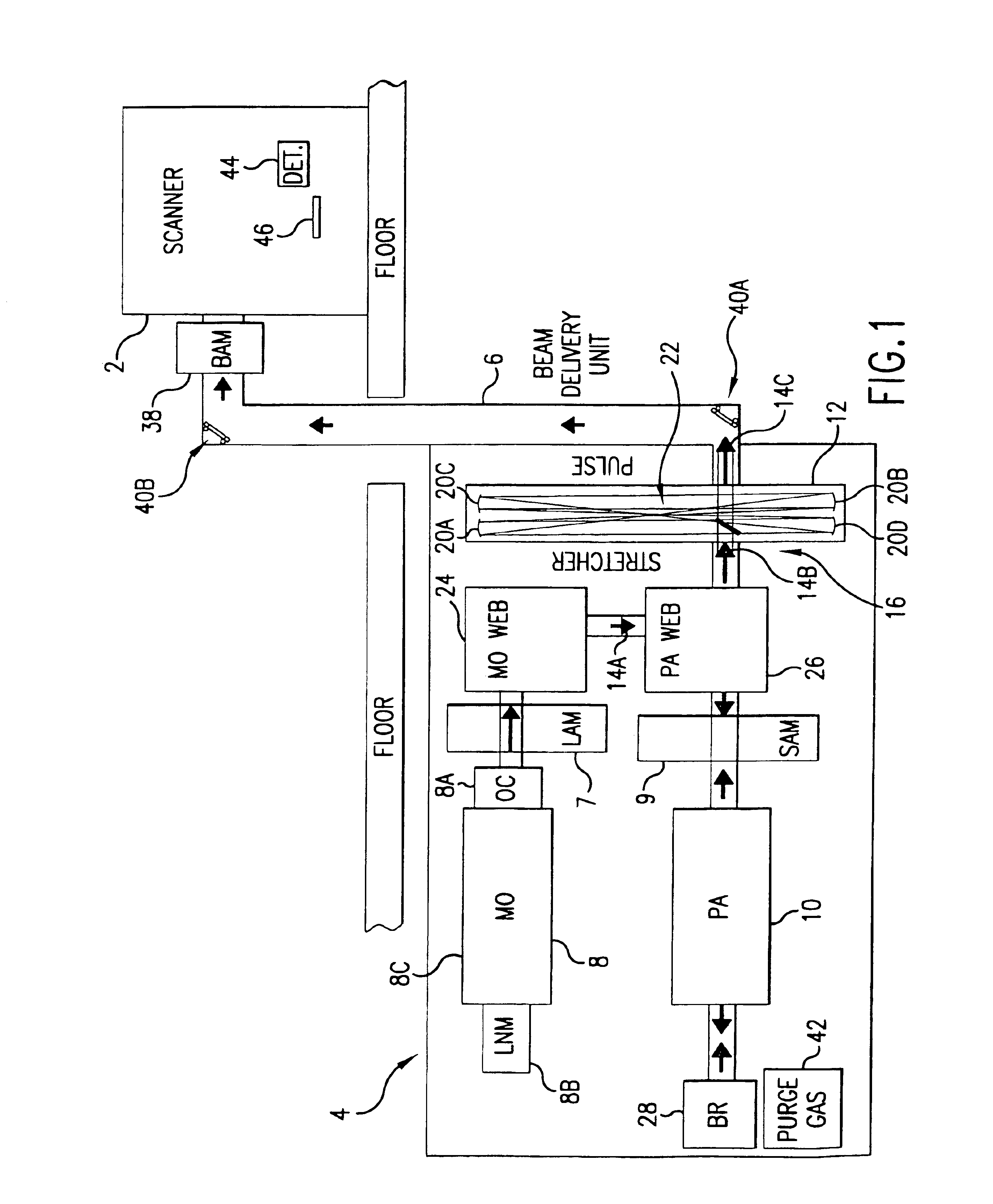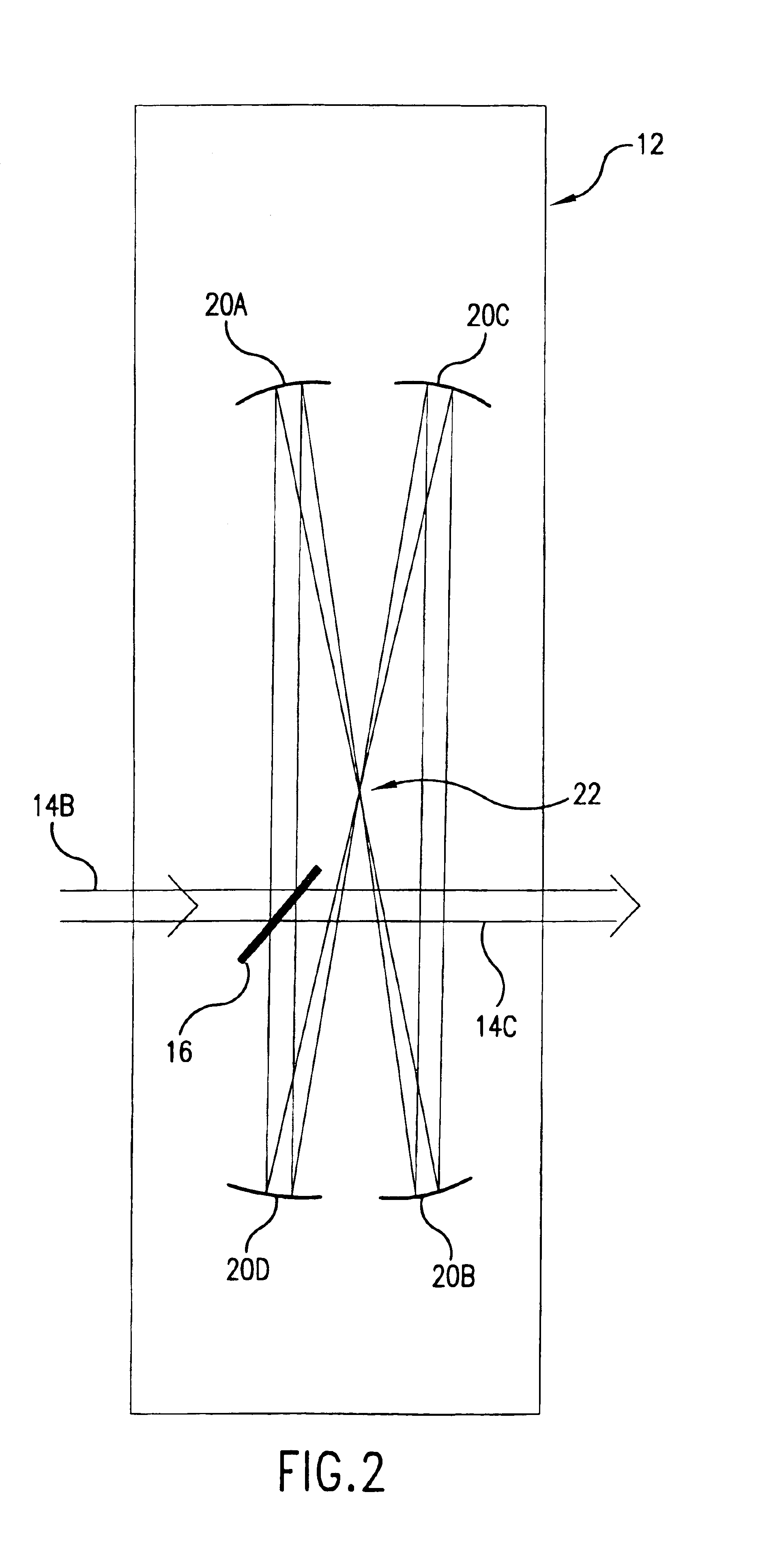Long delay and high TIS pulse stretcher
a stretcher and long delay technology, applied in the field of long delay and high tis pulse stretchers, can solve the problems of large and complex construction and operation of laser systems comprised of two separate systems, high cost, and high cost of downtime, and achieve the effects of increasing output power, wavelength stability and bandwidth, and pulse energy stability. stability and bandwidth, wavelength stability and bandwidth, and wavelength stability and bandwidth
- Summary
- Abstract
- Description
- Claims
- Application Information
AI Technical Summary
Benefits of technology
Problems solved by technology
Method used
Image
Examples
Embodiment Construction
[0034]A first preferred embodiment of the present invention is shown in FIG. 1. In this embodiment a 193 nm ultraviolet laser beam is provided at the input port of a stepper lithography machine 2 such, as the one of those supplied by Canon and Nikon with facilities in Japan and ASML with facilities in the Netherlands. In this case the main components of the laser system 4 are installed below the deck on which the scanner is installed. However, this laser system includes a beam delivery unit 6 which provides an enclosed beam path for delivering the laser beam to the input port of the scanner.
[0035]This particular laser system includes a master oscillator and a power amplifier 10 and is a type of laser system known as MOPA system. This MOPA arrangement represents an important advancement in integrated circuit light sources over the prior art technique of using a single laser oscillator to provide the laser light. The master oscillator and the power amplifier each comprise a discharge ...
PUM
 Login to View More
Login to View More Abstract
Description
Claims
Application Information
 Login to View More
Login to View More - R&D
- Intellectual Property
- Life Sciences
- Materials
- Tech Scout
- Unparalleled Data Quality
- Higher Quality Content
- 60% Fewer Hallucinations
Browse by: Latest US Patents, China's latest patents, Technical Efficacy Thesaurus, Application Domain, Technology Topic, Popular Technical Reports.
© 2025 PatSnap. All rights reserved.Legal|Privacy policy|Modern Slavery Act Transparency Statement|Sitemap|About US| Contact US: help@patsnap.com



